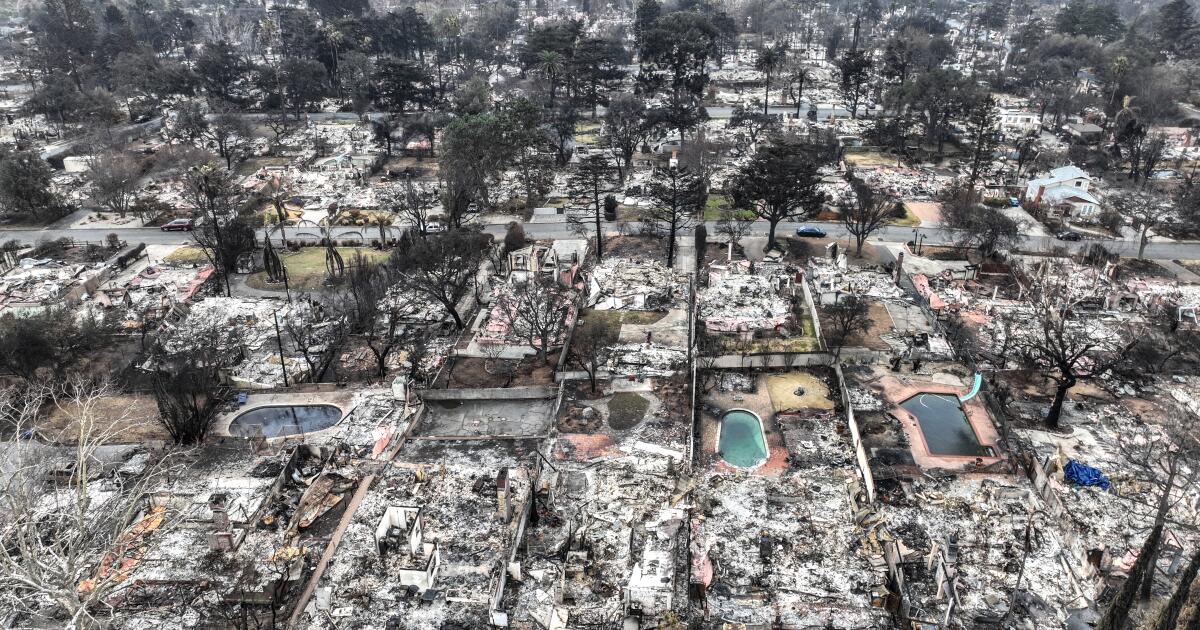Power Lines Over Eaton Canyon Saw Sudden Boost in Current Around Time of Fire
Edison’s Transmission Lines Experienced Momentary Increase in Current
Four Southern California Edison lines over Eaton Canyon saw a momentary increase of electrical current around the same time the destructive Eaton fire is believed to have ignited on January 7, the utility company told state regulators in a filing on Monday.
Increased Current Remained Within Design Limits
The incident, according to the filing, happened after Edison’s Eagle Rock-Gould line – about five miles away from the suspected start of the fire – experienced a fault, sending the increase of current across the company’s transmission system.
Edison officials in the filing said the current increase “remained within the design limits and operating criteria for these circuits and, as intended, did not trigger system protection on these lines.”
Court Order to Preserve Data and Equipment
But that equipment is now part of an expanded court order for Southern California Edison to preserve data and equipment that could shed some light on what exactly caused the blaze.
According to an agreement reached on Monday between attorneys representing the utility company and attorneys from the firm Edelson PC, which is representing an Altadena woman who lost her home in the fire, that equipment will remain preserved for at least 21 days so it can be examined.
Attorneys React to the Development
“It’s not a coincidence,” said Ali Moghaddas, an attorney with Edelson PC. “That six-mile stretch from the point of origin to the fault, that will remain untouched for 21 days.”
Scope of Preservation Order
According to the agreement, Edison will preserve and not alter towers and transmission lines for the Goodrich-Gould, Eagle Rock-Mesa, Mesa-Vincent No.1, Mesa-Vincent No. 2, and Mesa-Sylmer circuits in Eaton Canyon, all the way to the Gould substation. It will also preserve the Eagle Rock-Gould circuit between the Eagle Rock and Gould substations, which attorneys for the plaintiffs said are connected to the fault disclosed by Edison on Monday.
Edison’s Initial Opposition
In court on Monday, Edison attorneys initially opposed the expansion of a temporary restraining order, which told the company to preserve data and equipment related to the blaze around the suspected point of origin, and a 1-square mile area in eastern Altadena.
Douglas Dixon, an attorney representing Edison, described the request as “excessive and overly broad,” referring to it as “whack-a-mole.”
Edison’s Investigation
Kathleen Dunleavy, a spokesperson for Edison, said the company’s preliminary investigation revealed no faults or damage to the transmission lines in the Eaton Canyon area.
She added that the company has continued to inspect their equipment, including more distant lines interconnected with the system in Eaton Canyon, where they discovered the January 7 fault that occurred at about 6:11 p.m.
“However, the impact on the canyon was well within the standard parameters,” Dunleavy said. “This is part of our investigation process.”
California Department of Forestry and Fire Protection (CAL FIRE) Report
According to the California Department of Forestry and Fire Protection, or CAL FIRE, the first reports of the fire came in at 6:18 p.m.
Conclusion
The sudden boost in current on the power lines over Eaton Canyon around the time the fire started raises concerns about the potential role of electrical equipment in sparking the blaze. The court order to preserve data and equipment will help investigators determine the cause of the fire and whether it was linked to the fault on the transmission lines.
FAQs
* Q: What caused the fire?
A: The cause of the fire has not been officially determined, but investigators are focusing on a possible electrical transmission tower in Eaton Canyon as a potential point of origin.
* Q: What is the scope of the preservation order?
A: The order requires Edison to preserve and not alter towers and transmission lines for several circuits in Eaton Canyon, as well as the Eagle Rock-Gould circuit between the Eagle Rock and Gould substations.
* Q: How long will the equipment be preserved?
A: The equipment will be preserved for at least 21 days, allowing investigators to examine it for potential evidence.
* Q: What is the significance of the increased current on the power lines?
A: The increased current on the power lines, while within design limits, may be a significant factor in the investigation into the cause of the fire.


